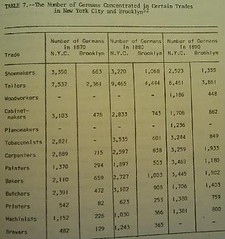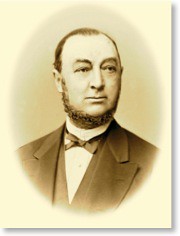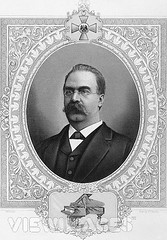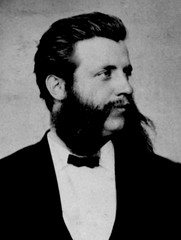From The Peopling of New York City
Contents |
Overview
The German workers differed from the other immigrant groups in that they were ready for city life. They were high class workers unlike, for example, the Irish immigrants who were mostly farmers who were unprepared for the completely new landscape of New York City.
German Laborers
In the general the arriving Germans were generally professional workers. The largest portion of the immigrants were tailors with their numbers between 6-9 thousand between 1860-1890. The various professions were numerous ranging from cabinet makers to cigar manufacturers, from brewers to machinists. The German domination of clothes and show making as well as furniture construction persisted for many decades. Heavy competition for employment with the Irish and the Anglo-Saxon worker created a stigma against the Germans. They were vilified as strike breakers and trouble makers for using union power to get concessions. This caused Germans to generally resent assimilation. As such they were mostly employed by German businesses. There were several well known success stories among the German workers such as Oswald Ottendorfer, Conrad Poppenhusen, and William Steinway. These individuals were particular successes in the businesses world as well as being influential in the lives of the German population of New York.
Unions
After Bismark passed anti-communist laws in Germany many of the communist organizers sought refuge in the Unites States and New York in particular. [1] Many of these leaders became advent union organizers pushing for further concession from the employers in areas such as pay and work hours. Regular workers were pushed into joining the unions because of the heavy competition for jobs with the Irish and Anglo-Saxon workers. In particular Adolf Strasser, the leader of Cigarmakers' International Union pioneered the development of technique known as American business unionism. Since the Germans were generally isolating themselves from the the rest of New York population they were employed under German businesses. The German employer was generally sympathetic with the plight of the workers but refused to believe in strikes as a legitimate form of protest. The unions drew criticism in the latter 1800's as the rise of socialism was detested by the general population.
Worker Towns
The well to do Germans firmly believed in helping out their fellow Germans. In particular industrial magnates Conrad Poppenhusen and William Steinway built so-called employer towns. These towns were created out the intense desire to prevent Germans from assimilating into the American mainstream. To this end the employer towns were built to house the workers employed at the local factories. The employers built homes, schools, sanitariums, etc. for their workers.
Women in the Workplace
Because of the relative prosperity of the German population women were not required to seek employment. They generally continued their traditional roles as housewives and mothers. When the families required money women earned through needlework, teaching, or domestic services. Sometimes however the only way to earn money was prostitution.
Successful German Industrialists
Conrad Poppenhusen
He was a rubber magnate with a major factory based at College Point, Queens. He lost everything he owned in the Hamburg fires and decided to migrate to the U.S. to seek a second chance. His whalebone business met with a limited success until he bought the exclusive rights to use the Goodyear rubber making process. From that point on his businesses took off. His new-found wealth allowed him to be a devoted philanthropist. He was one of the pioneers of the employer town system and was a firm believer in preserving the German identity. To that end he built schools and kindergartens for his German workers while encouraging the German-only teaching methods.
William Steinway
A successful piano manufacturer, Steinway was Poppenhusen's counterpart in Astoria, Queens. he was heavily Germanistic, believing strongly in helping his fellow German. He also built employer towns for his workers including several public baths and even a ferry. Like many German industrial magnates he had a passion for invention and business expansion. As such he secured the rights to the motor invented by Gottlieb Daimler and founded Daimler Motor Company in order to manufacture the motors for industrial purposes. Ironically he believed that the idea of the automobile would fail since such a contraption would be too expensive for the general American market. Steinway was highly political being an avid supporter of the Democratic Party. He was a friend of Grover Cleeveland. This allowed him to promote the German Americans in posts of high political power.
Oswald Ottendorfer
He was the editor of New York Staats-Zietung, one of the most influential German newspapers in New York. He came to New York 1850 and began working at a factory. He eventually was hired by Jacob Uhl, who was at the time the publisher of the New York Staats-Zietung. After Uhl's death Ottendorfer married Uhl's widow and took over the position as the editor of the newspaper. He was a Jeffersonian Democrat and as such he was opposed to the centralization of government. He was one of the most influential figures shaping the public opinion of everyday Germans.
- Return to Occupational Patterns
- Return to Germans
References
- ↑ Lapham,Sigurd. The German-Americans of New York City 1860-1890. Pg 42. St. Johns University, 1977. Print.
- ↑ Fick, Heinrich H. German Contributions to American Progress. Reprinted from Education. 1902. Print.
- ↑ Lohr,Otto. The First Germans in North America and the German Element in New Netherland. G.E. Stewart & Company. New York. 1912. Print.





